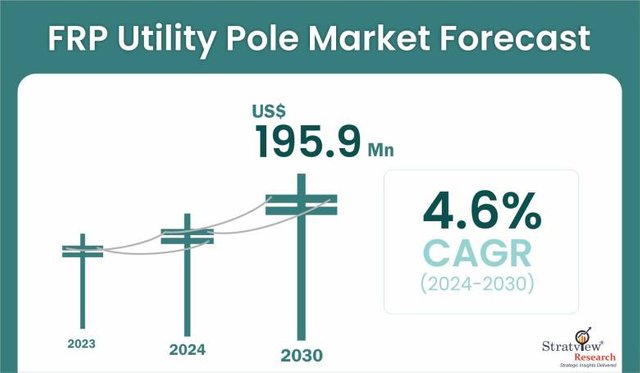Strength Meets Sustainability: The Rise of the FRP Utility Pole Market
Fiber Reinforced Polymer (FRP) utility poles are transforming electrical and telecommunication infrastructure. Designed to withstand corrosion, extreme weather, and heavy loads, FRP poles offer a long service life with minimal maintenance compared to wood, steel, or concrete alternatives.
According to Stratview Research, the FRP utility pole market was estimated at USD 142 million in 2023 and is likely to grow at a decent CAGR of 4.6% during 2024-2030 to reach USD 195.9 million in 2030.
Download the sample report here:
https://stratviewresearch.com/Request-Sample/1436/FRP-utility-pole-market.html#form
Drivers
1. Resilience in Harsh Environments: FRP poles perform well in coastal, desert, and humid climates.
2. Maintenance Cost Reduction: Minimal need for repainting, treating, or replacing.
3. Grid Modernization Initiatives: Utilities upgrading aging infrastructure with advanced materials.
4. Environmental Regulations: Encouraging sustainable, non-toxic materials.
Challenges
1. High Initial Costs: Greater upfront investment compared to wood or steel poles.
2. Market Awareness: Limited familiarity in some developing markets.
3. Load-Bearing Limitations: Very heavy applications may require hybrid solutions.
Trends
1. Customized Pole Designs: Tailoring for telecom, transmission, or distribution use.
2. Hybrid Material Integration: Combining FRP with metals for added strength.
3. Fire-Resistant Formulations: Addressing wildfire-prone regions.
Opportunities
1. Storm-Prone Regions: FRP’s resilience makes it ideal for disaster recovery.
2. Rural Electrification: Lightweight poles reduce transport and installation costs.
3. Smart Grid Integration: Poles designed to house sensors and IoT equipment.
Conclusion
FRP utility poles are emerging as a preferred choice for forward-thinking utilities aiming for long-term resilience and lower lifecycle costs.
